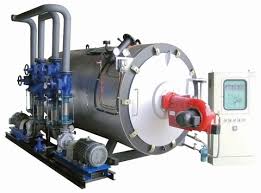
Ara . 02, 2024 04:39 Back to list
Understanding the Functionality and Design of Steam Boiler Furnaces for Efficient Heating
Understanding Steam Boiler Furnaces A Comprehensive Overview
Steam boiler furnaces play a crucial role in various industrial processes, providing steam for heating, power generation, and even in certain manufacturing processes. Their ability to convert water into steam efficiently makes them an essential component in many sectors, including energy production, food processing, and pharmaceuticals. In this article, we will delve into the fundamental aspects of steam boiler furnaces, including their types, parts, operation, and maintenance.
What is a Steam Boiler Furnace?
A steam boiler furnace is a type of boiler designed to generate steam through the combustion of fuel. The steam produced can be used for various applications, such as heating buildings, driving turbines for electricity generation, or powering industrial equipment. The furnace itself is the part of the boiler where the fuel is combusted to produce heat.
Types of Steam Boiler Furnaces
There are several types of steam boilers, and they can be categorized based on various parameters, chiefly the design and fuel type.
1. Fire-Tube Boilers In fire-tube boilers, hot gases produced by burning fuel pass through tubes that are surrounded by water. This design allows for efficient heat transfer from the exhaust gases to the water, producing steam. Fire-tube boilers are generally simpler and have lower costs, making them suitable for small-scale applications.
2. Water-Tube Boilers In contrast to fire-tube boilers, water-tube boilers have water-filled tubes that are heated by hot gases surrounding them. This design is more efficient for generating high-pressure steam and is commonly used in power plants and large industrial applications. Water-tube boilers can handle higher temperatures and pressures compared to fire-tube boilers.
3. Electric Steam Boilers These boilers use electricity as their heat source rather than combustion. While they tend to be more expensive to operate, they offer a clean alternative and are often used in situations where emissions regulations are strict or natural gas is not available.
4. Biomass Boilers Utilizing organic materials such as wood pellets, agricultural waste, or dedicated energy crops as fuel, biomass boilers are an environmentally friendly option. They contribute to renewable energy initiatives and can greatly reduce greenhouse gas emissions when compared to fossil fuel boilers.
steam boiler furnace

Key Components of a Steam Boiler Furnace
A steam boiler furnace consists of several key components that work together to ensure its efficient operation
- Furnace The combustion chamber where fuel is burned to produce heat. - Burner Responsible for mixing the fuel with air and igniting it. - Heat Exchanger Transfers heat from the combustion gases to the water, converting it to steam. - Water Supply System Ensures an adequate supply of water to the boiler. - Steam Distribution System Delivers the steam to where it is needed in the facility. - Control System Monitors and controls the operation of the boiler, ensuring safety and efficiency.
Operation of a Steam Boiler Furnace
The operation of a steam boiler furnace begins with the filling of the boiler with water. The burner ignites the fuel, resulting in the combustion process within the furnace. The heat generated causes the water in the boiler to heat up and eventually turn into steam. The steam is then directed through pipes to its point of use, where it can be converted into heat or power.
Maintaining optimal operating conditions is paramount. Regular monitoring of temperature, pressure, and water levels is essential to prevent issues such as overheating or pressure build-up, which can lead to catastrophic failures.
Maintenance of Steam Boiler Furnaces
Like any machinery, steam boiler furnaces require regular maintenance to ensure safety and efficiency. This includes
- Routine Inspections Checking for any signs of wear or damage. - Cleaning Ensuring that the furnace and heat exchangers are clear of debris and buildup, which can impede efficiency. - Water Treatment Maintaining water quality to prevent scale buildup and corrosion.
In conclusion, steam boiler furnaces are integral to many industrial operations, converting fuel into steam efficiently. Understanding their types, components, and operation is essential for anyone involved in industrial processes. Regular maintenance is key to ensuring long-term reliability and safety, making expertise in this area invaluable for technicians and engineers alike.
-
Efficient Biomass Fired Hot Water Boiler | AI Heating Solution
NewsAug.01,2025
-
High-Efficiency Gas Thermal Oil Boilers | HPT Models
NewsJul.31,2025
-
Oil Fired Hot Water Boilers Sale - High Efficiency & Affordable
NewsJul.31,2025
-
High-Efficiency Commercial Oil Fired Steam Boiler for Industry
NewsJul.30,2025
-
High-Efficiency Biomass Fired Thermal Oil Boiler Solutions
NewsJul.30,2025
-
High Efficiency Gas Fired Thermal Oil Boiler for Industrial Heating
NewsJul.29,2025
Related PRODUCTS






















